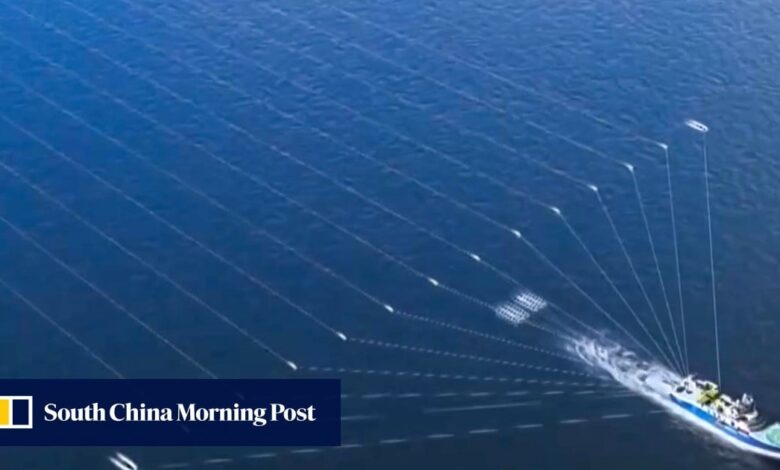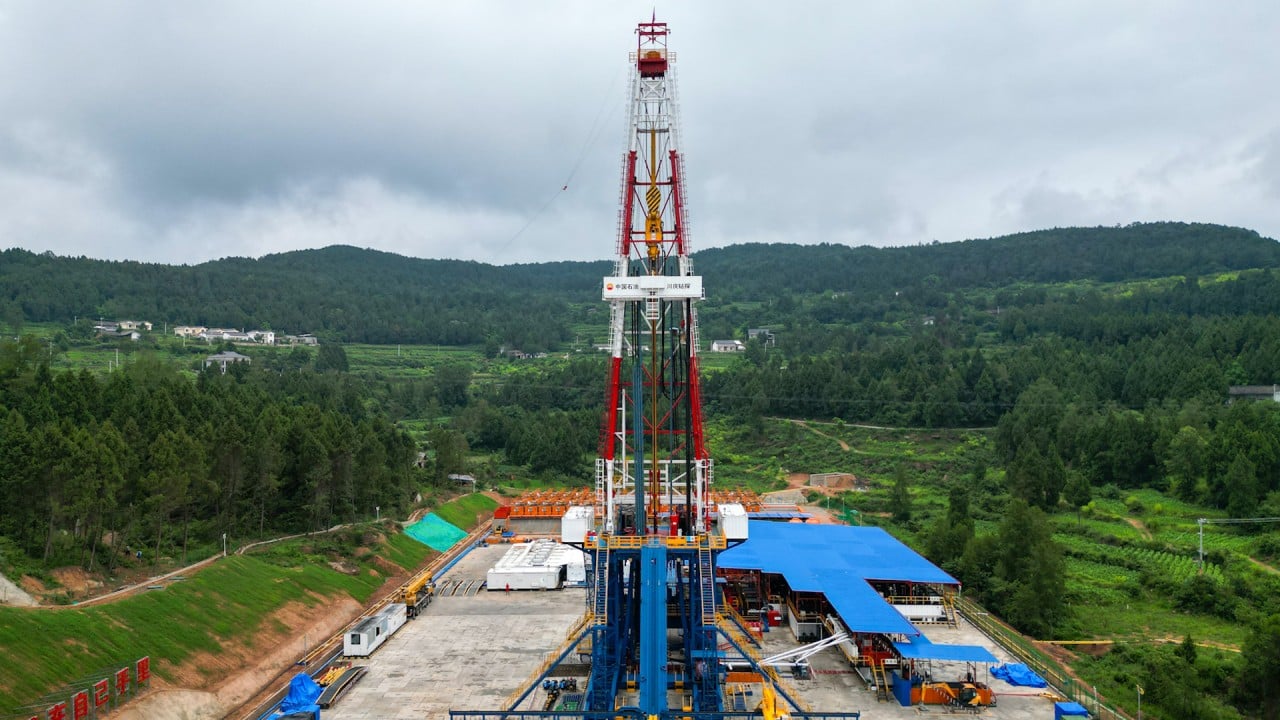China uses underwater explorer with 8km cables to create first 3,000m deep-sea map in hunt for oil and gas

[ad_1]
A Chinese-developed marine seismic explorer system is set to release a deep-sea geological structure map after completing its first ultra-deep exploration at 3,000 metres (8,850 feet), state broadcaster CCTV reported.
Data is gathered by 10 detection cables – each more than 8km long – towed under water by the geophysical exploration ship Haiyang Shiyou 720, or Offshore Oil 720.
“The equipment performance supports offshore oil exploration,” chief engineer of system development Ruan Fuming told CCTV.
“Compared to imported equipment, the seismic data collected by Haijing has higher resolution. It enables the precise characterisation of complex geological structures tens of thousands of metres deep when it operates at the depth of 3,000 metres,” he said.
South China Sea: risk of flashpoints ‘high’ as energy projects expand
South China Sea: risk of flashpoints ‘high’ as energy projects expand
The equipment is also capable of acquiring ultra-low-frequency signals at 2 hertz, significantly improving the precision and data quality of marine seismic exploration.
The Chinese system has been working in deep water about 500km (310 miles) south of Zhuhai in the southern province of Guangdong for more than a month.
In this mission, the underwater equipment operated over an area of 2,500 sq km to collect real-time seismic data.
This is the first time China has conducted seismic exploration operations in ultra-deep water areas using equipment developed in China.
The data it gathers will show detailed geological characteristics of sea floor strata, providing key clues to oil and gas resource-rich areas, according to CCTV.
The home-grown Deep Sea No. 1 gas field – 150km from Sanya on the southern island of Hainan and also run by CNOOC – has a maximum operational water depth of 1,500 metres and had produced more than 4.5 billion cubic metres of gas by April this year after it was inaugurated in June 2021.
“We will apply domestic equipment to search for large and medium-sized oil and gas fields at depth and distance to ensure that China’s energy supply remains under our own control,” CNOOC deputy chief exploration engineer Xu Changgui told CCTV on Saturday.
[ad_2]
Source link







